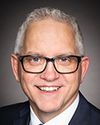I would like to call this meeting to order.
Welcome to the third meeting of the Standing Committee on Indigenous and Northern Affairs.
We're commencing our study on barriers to indigenous economic development.
We have three organizations that have agreed to come today: the First Nations Finance Authority, the First Nations Financial Management Board, and the First Nations Tax Commission.
We'll have 90 minutes to ask them questions before we proceed to other committee business.
Of course, as you know, those participating in person must follow the necessary health measures.
To ensure an orderly meeting, I'd like to outline a few rules that we're going to follow.
Members or witnesses may speak in the official language of their choice. Interpretation services available today are English, French and Inuktitut. In other words, you have four things that you can select on your screen. They are the floor audio, English, French or Inuktitut. If interpretation is lost, please inform me immediately and we'll ensure that interpretation is properly restored before resuming the proceedings. The “raise hand” feature at the bottom of the screen can be used at any time if you wish to speak or alert the chair.
For members participating in person, proceed as you usually would when the whole committee is meeting in person in a committee room.
Before speaking, please wait until I recognize you by name. When speaking, please speak slowly and clearly. When you are not speaking, your mike should be on mute. As a reminder, all comments by members should be addressed through the chair.
The representatives will have five minutes per organization for opening statements. We will then move into questions from committee members.
The first round of questions will allow members six minutes each in the following order: Conservative, Liberal, Bloc and NDP. The order and time for the second and subsequent rounds will be the Conservatives, five minutes; Liberals, five minutes; Bloc Québécois, two and a half minutes; New Democratic Party, two and a half minutes; Conservative Party, five minutes; and Liberal Party, five minutes. We'll recycle that for subsequent questions.
As I said, following our 90 minutes with our witnesses, we will reserve the final 30 minutes for other committee business in camera.
I'd now like to invite Mr. Ernie Daniels, president and CEO of the First Nations Finance Authority, to start us off.
Mr. Daniels, you have five minutes.
Thank you.



